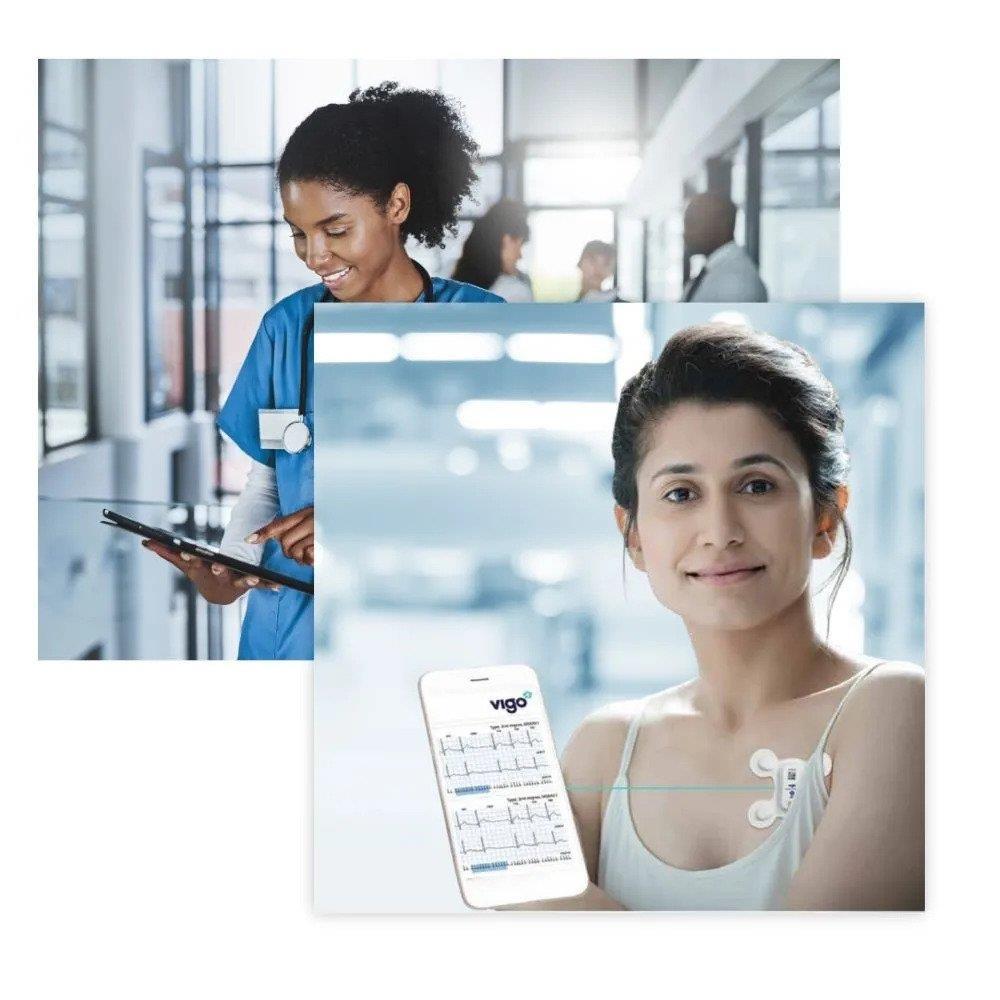A Holter monitor is a medical device that is used to record the electrical activity of a person's heart over a period of 24 to 48 hours or longer. It is commonly used to diagnose and monitor heart conditions such as arrhythmias. A wireless Holter monitor is a more advanced version of the traditional

Vigocare | Vigocare.com
info@vigocare.com UnderstandingtheFunctioningofa WirelessHolterMonitor: AComprehensiveGuide
|
Holter monitor that operates without wires, making it more comfortable and convenient to wear.
How Does a Wireless Holter Monitor Work?
A wireless Holter monitor works by continuously recording the electrical activity of the heart and transmitting the data wirelessly to a receiver. The monitor consists of several components:
ECG (Electrocardiogram) Sensors
The ECG sensors are attached to the chest and are responsible for recording the electrical signals of the heart. They are usually placed on the chest with adhesive pads.
Recording Device
The recording device is a small, portable device that is worn on a belt or in a pocket. It records the electrical signals from the ECG sensors and stores the data.
Wireless Transmission
The wireless transmission allows the data from the recording device to be transmitted wirelessly to a receiver, typically a smartphone or tablet. The receiver can be used to view and store the data for later analysis by a healthcare professional.
Data Analysis
The data recorded by the wireless Holter monitor is analyzed to determine the presence of any abnormal heart rhythm patterns or other heart conditions. The data can also be used to monitor the effectiveness of treatments or medications.
Vigocare | Vigocare.com | info@vigocare.com
Advantages of Wireless Holter Monitors Convenience
The wireless Holter monitor is more convenient to use than traditional Holter monitors as it eliminates the need for wires and cables, making it more comfortable to wear.
Portability
The compact size and wireless transmission of the wireless Holter monitor make it easy to carry and use while on-thego. This allows patients to carry on with their daily activities while wearing the monitor.
Improved Data Accuracy
The wireless Holter monitor provides improved data accuracy compared to traditional Holter monitors as it eliminates the risk of artifacts caused by movement or disconnection of wires.
Real-time Monitoring
The wireless Holter monitor allows for real-time monitoring of heart activity, providing healthcare professionals with immediate access to critical information. This allows for prompt treatment in the case of a cardiac event.
Conclusion
The wireless Holter monitor is a useful tool for diagnosing and monitoring heart conditions. Its wireless technology and portable design make it more convenient and comfortable to use compared to traditional Holter monitors. Additionally, its improved data accuracy and real-time monitoring capabilities provide healthcare professionals with critical information to help diagnose and treat heart conditions.
Vigocare | Vigocare.com
info@vigocare.com
|

Vigocare | Vigocare.com | info@vigocare.com With the
of
in the healthcare industry,
use of wireless Holter monitors
likely to
more widespread in the future. Check out https://vigocare.com/smart-heart/
increasing use
technology
the
is
become even


